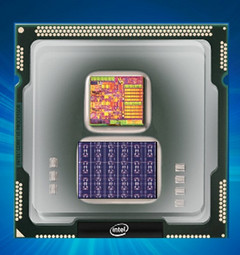With Tesla, Google and most recently Mercedes pioneering the self-driving car industry, the interest for artificial intelligence is on the rise. Nvidia and AMD are already offering GPU-based AI solutions, while some mobile chip makers like Apple and Qualcomm are willing to extend the currently limited AI features in their system-on-a-chip solutions. Intel is now joining the AI craze with its first self-learning neuromorphic processor codenamed Loihi, also providing the necessary programming language.
Neuromorphic processors can simulate how human brains work, integrating artificial neurons that can form synapses, which facilitate the self-learning process. Intel’s Loihi chip can perform training and inference tasks, and this allows it to adapt in real time, without the need to connect to the cloud. Loihi can, thus, be efficiently used by self-driving cars that need to recognize other vehicles and adapt quickly to various road conditions. The neuromorphic computing interface could also be used to help improve education, facial recognition, manufacturing, emergency services and smart cities.
Additional features that come with the new Loihi chip include:
• Intel’s 14 nm manufacturing process
• fully asynchronous neuromorphic many core mesh that supports numerous neural network topologies
• neuromorphic cores that integrate a learning engine, which can be programmed to adapt to environmental variations
• 130,000 artificial neurons that can develop 130 million synapses
Intel intends to test the chip with the aid of leading universities and research institutions across the world in the first half of 2018. Mass production of the chip could start in a few years.









